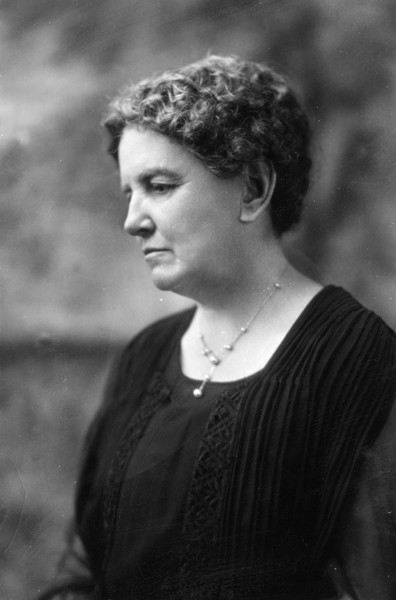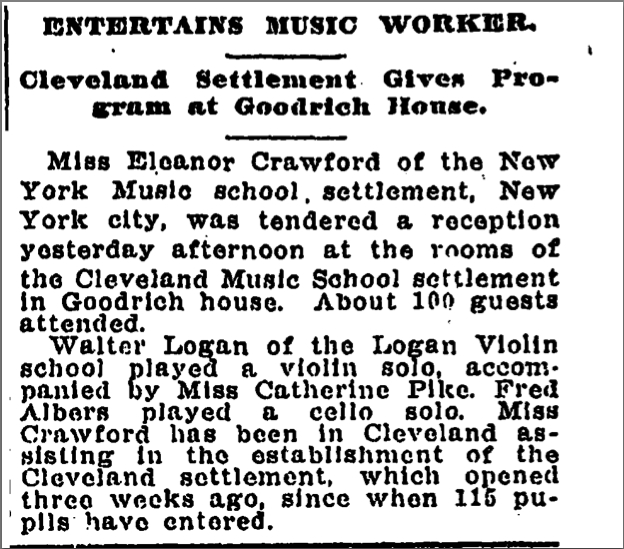Cleveland Music School Settlement

The Music Settlement offers music lessons to a wide audience, especially underprivileged children, to create a community of artistic expression. Created as part of the settlement movement, the Music Settlement remains one of the largest settlement houses in the country. The settlement movement began in the late nineteenth century and peaked during the early twentieth. Social reformers hoped to alleviate the poverty of their neighbors and create a more equitable society. They hoped to achieve this through settlement houses in which upper and middle class volunteers provided education, healthcare, and other services in poor, urban areas.
The Music Settlement was established in 1911 inside the walls of The Goodrich House by Almeda Adams. Although blind, she mastered and taught music with the help of colleagues and a $1,000 donation from the Fortnightly Musical Club. The settlement house provided free or inexpensive musical training for the Cleveland's immigrant population, especially children. Within a few years attendance more than tripled and the school was forced to move several times to accommodate growing class sizes. During the Depression, class fees were waived for most students. In 1938 Edmund Burke, a wealthy banker, sold his forty-two room house to the Cleveland Music School Settlement. The Music Settlement still resides in the Burke Estate at 11125 Magnolia Drive although the campus now encompasses five buildings.
By 1963 the Cleveland Music School Settlement had 1,300 active members. In 1966, it began a music therapy program which assist both children and adults with special needs. Currently, the organization offers early childhood education for children ages 3 to 8 and allows people of all ages to begin taking music lessons in instruments ranging from violin to the harp. The Music Settlement remains a force in the artistic community and many of its graduates perform with the Cleveland Orchestra. Today it is one of the largest schools of its kind in the United States, serving nearly 2,700 students, many of whom received scholarship or financial aid.
Images




